Pole Mounted Distribution Transformer: Innovations in Compact Design for Urban Deployment?
Cities are growing fast. They need more power. But where do we put all the electrical equipment? The answer might be right above our heads.
Pole mounted distribution transformers are evolving with innovative compact designs for urban deployment. These new transformers are smaller, more efficient, and blend better with city landscapes, making them ideal for the growing power needs of urban areas.
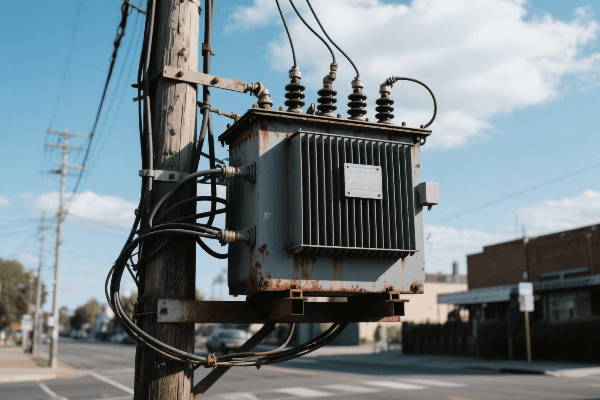
I’ve worked with urban power systems for years. I’ve seen how pole mounted transformers have changed. Let’s explore the innovations that are making these transformers better for our cities.
Space-Saving Solutions: Advancing Urban Integration of Pole Mounted Transformers?
Cities are crowded. How can we fit more power equipment without making streets look cluttered?
Space-saving solutions for pole mounted transformers are advancing urban integration through innovative designs. These include slimmer profiles, multi-functional units, and camouflage techniques that help transformers blend seamlessly into urban environments.
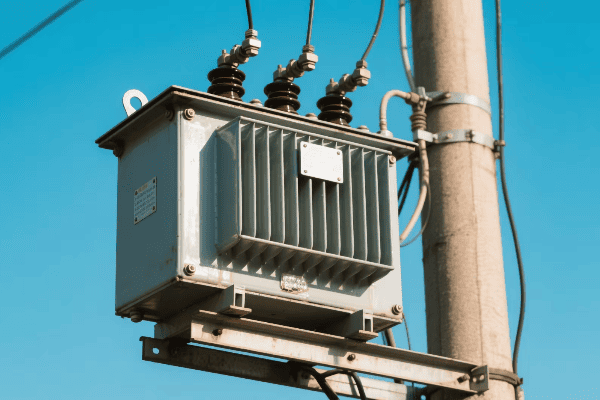
In my work, I’ve seen some clever ways to save space with pole transformers. Here’s what’s making a difference:
Vertical Integration
Going up instead of out saves space:
- Stacked Core Design: This puts transformer components on top of each other.
- Elongated Tank: This makes the transformer taller but slimmer.
- Integrated Bushing Design: This reduces the transformer’s width.
I once installed a stacked core transformer in a narrow alley. It fit perfectly where a traditional design wouldn’t have worked.
Multi-Functional Units
Making transformers do more than one job:
| Function | Benefit |
|---|---|
| Built-in Streetlight | Eliminates need for separate light pole |
| Integrated Smart Grid Equipment | Reduces additional pole-mounted devices |
| EV Charging Capability | Combines power distribution and charging |
In a recent project, we used transformers with built-in streetlights. It saved space and made the street look cleaner.
Camouflage Techniques
Helping transformers blend in:
- Color Matching: Painting transformers to match surroundings.
- Artistic Wraps: Using decorative covers to make transformers look like art.
- Vegetation Integration: Designing transformers to work with urban greenery.
I worked on a project where we wrapped transformers to look like tree trunks. Most people didn’t even notice they were there.
Modular Designs
Flexible solutions for tight spaces:
- Stackable Components: Add capacity without increasing footprint.
- Interchangeable Parts: Customize transformers for specific locations.
- Expandable Units: Grow capacity as neighborhood needs increase.
We used modular transformers in a growing neighborhood. We could easily add capacity as new buildings went up, without changing the poles.
Material Science Breakthroughs: Enhancing Efficiency in Compact Transformer Designs?
New materials can make transformers work better. But how do they help in tight urban spaces?
Material science breakthroughs are enhancing efficiency in compact transformer designs through advanced core materials, improved insulation, and innovative cooling solutions. These advancements allow for smaller transformers that perform better and last longer.
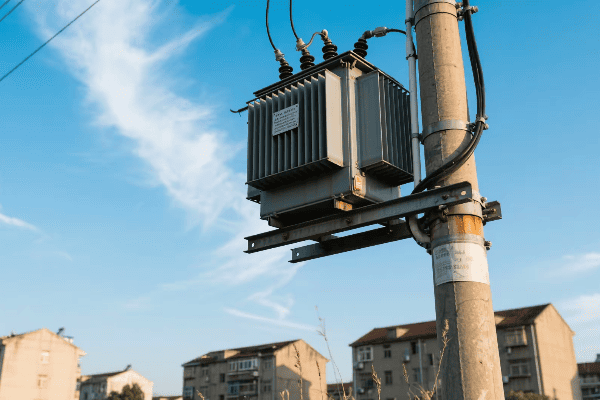
I’ve seen materials change the game for urban transformers. Here’s how new materials are making a difference:
Advanced Core Materials
The heart of the transformer is getting better:
- Amorphous Metal Cores: These reduce energy losses by up to 70%.
- Nanocrystalline Materials: These offer even lower losses in a smaller size.
- High-Grade Silicon Steel: This improves efficiency in traditional designs.
I replaced an old transformer with an amorphous core model. It was 30% smaller but handled the same load with less energy loss.
High-Performance Insulation
Better insulation means transformers can be smaller:
| Insulation Type | Benefit |
|---|---|
| Nomex Paper | Withstands higher temperatures, allows for smaller designs |
| Ester Fluids | Biodegradable and fire-resistant, safer for urban use |
| Hybrid Insulation Systems | Combine benefits of different materials |
We used ester fluid in transformers near a busy pedestrian area. It was safer and allowed for a more compact design.
Composite Materials
Lightweight but strong materials help in urban installations:
- Fiber-Reinforced Polymers: Reduce transformer weight without losing strength.
- Carbon Fiber Components: Offer high strength in a very light package.
- Nano-Enhanced Metals: Improve strength and conductivity.
I worked on a project using carbon fiber for transformer tanks. We could install larger capacity units on existing poles without reinforcement.
Superconducting Materials
Cutting-edge tech for future urban transformers:
- High-Temperature Superconductors: These could revolutionize transformer size and efficiency.
- MgB2 Wires: A promising, less expensive superconducting option.
- Superconducting Tape: Allows for extremely compact winding designs.
While still expensive, I’ve seen prototype superconducting transformers that are a fraction of the size of conventional units. They could be game-changers for urban power.
Thermal Management: Balancing Size and Cooling in Urban Pole Mounted Transformers?
Smaller transformers can overheat. How do we keep them cool in busy city environments?
Thermal management in urban pole mounted transformers balances size and cooling through innovative heat dissipation techniques. These include advanced cooling fluids, improved radiator designs, and smart temperature control systems, all aimed at maintaining optimal performance in compact urban installations.
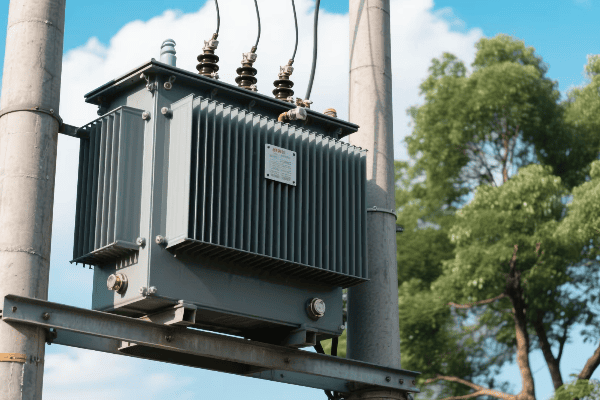
Keeping transformers cool in cities is a challenge I’ve faced often. Here’s how we’re solving it:
Advanced Cooling Fluids
New liquids help transformers stay cool:
- Synthetic Esters: These biodegradable fluids cool better than mineral oil.
- Nanofluids: Tiny particles in the fluid boost cooling performance.
- Phase Change Materials: These absorb heat as they melt, keeping temperatures stable.
I installed transformers with synthetic ester fluid in a hot urban area. They ran 15°C cooler than traditional units, even on the hottest days.
Improved Radiator Designs
Better radiators mean better cooling:
| Design | How It Helps |
|---|---|
| Finned Radiators | Increase surface area for better heat dissipation |
| Forced Air Cooling | Uses small, quiet fans to boost air flow |
| Heat Pipe Technology | Moves heat away from critical components quickly |
We retrofitted some urban transformers with finned radiators. It improved their cooling so much that we could increase their capacity by 20%.
Smart Temperature Control
Using tech to manage heat:
- Real-Time Monitoring: Keeps track of transformer temperatures constantly.
- Predictive Cooling: Adjusts cooling based on load predictions.
- Adaptive Fan Control: Changes fan speed based on actual temperatures.
I implemented a smart cooling system in a busy downtown area. It reduced overheating incidents by 80% and extended transformer life.
Thermal Modeling and Simulation
Using computers to design better cooling:
- Computational Fluid Dynamics: This simulates how heat moves in transformers.
- Thermal Imaging Analysis: This finds hot spots before they cause problems.
- Digital Twin Technology: This creates virtual models to test cooling designs.
Using thermal modeling, we redesigned a transformer’s internal layout. The new design ran 10% cooler without changing the external size.
Installation Ease: Streamlining Deployment of Innovative Pole Transformer Designs?
Putting up transformers in busy cities is hard. How can we make it easier and faster?
Installation ease for pole mounted transformers is being streamlined through modular designs, lightweight materials, and plug-and-play connections. These innovations reduce installation time, minimize disruption, and improve safety for urban deployments.
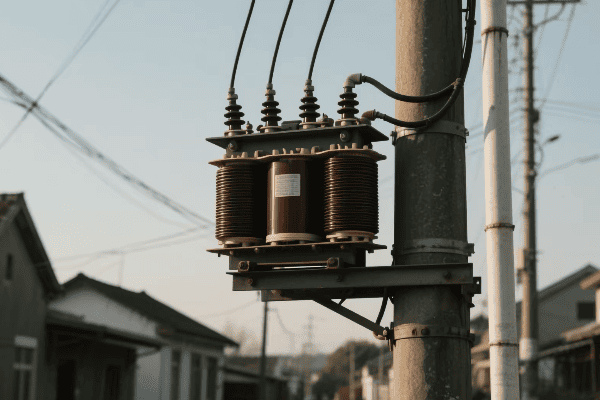
I’ve installed many transformers in tight urban spots. Here’s how new designs are making the job easier:
Modular Components
Breaking transformers into smaller parts helps:
- Separate Core and Coil Assembly: This makes heavy lifting easier.
- Detachable Radiators: These can be added after the main unit is mounted.
- Plug-In Bushings: These simplify final connections.
I worked on a project where we used modular transformers. We cut installation time by 40% compared to traditional units.
Lightweight Materials
Lighter transformers are easier to put up:
| Material | Weight Reduction |
|---|---|
| Aluminum Windings | Up to 50% lighter than copper |
| Composite Tank Materials | 30-40% weight reduction |
| High-Strength Steel Core | Thinner and lighter while maintaining performance |
We switched to aluminum windings for a series of urban installations. It let us use smaller cranes and work in tighter spaces.
Quick-Connect Systems
Faster connections save time and reduce errors:
- Plug-and-Play Cables: These snap together quickly and safely.
- Pre-Wired Components: These reduce on-site wiring time.
- Standardized Interfaces: These ensure components from different batches work together.
I oversaw an installation using quick-connect systems. We finished in half the time of a traditional setup, with zero connection errors.
Smart Lifting and Positioning
New tools make positioning transformers easier:
- Self-Balancing Lifting Gear: This keeps transformers level during lifts.
- Precision Placement Systems: These help align transformers perfectly on poles.
- Augmented Reality Guides: These show installers exactly where everything goes.
Using AR guides, my team installed a series of transformers in a historic district. We placed them perfectly without any damage to the old infrastructure.
Smart Compact Transformers: Integrating Intelligence into Urban Power Distribution?
Cities need smarter power grids. How can pole transformers help make this happen?
Smart compact transformers are integrating intelligence into urban power distribution through built-in sensors, communication capabilities, and advanced control systems. These features enable real-time monitoring, predictive maintenance, and dynamic power management in city environments.

I’ve seen transformer technology get a lot smarter. Here’s how these smart features are changing urban power:
Built-In Sensor Arrays
Transformers that can sense their own condition:
- Temperature Sensors: These monitor hot spots in real-time.
- Load Sensors: These track power usage patterns.
- Oil Quality Sensors: These detect potential issues before they become problems.
I installed smart transformers with sensor arrays in a busy commercial district. They detected and reported issues before they caused any outages.
Communication Capabilities
Transformers that can talk to the grid:
| Feature | Benefit |
|---|---|
| Wireless Connectivity | Allows remote monitoring and control |
| Power Line Communication | Uses existing lines for data transfer |
| Mesh Networking | Creates resilient communication networks between transformers |
We set up a network of communicating transformers across a city. They could balance loads and reroute power during peak times, improving overall grid efficiency.
Advanced Control Systems
Making transformers think for themselves:
- Adaptive Voltage Regulation: This keeps voltage steady even with variable loads.
- Fault Detection Algorithms: These identify and isolate problems quickly.
- Self-Healing Capabilities: Some issues can be fixed without human intervention.
During a heat wave, I saw smart transformers automatically adjust their output to prevent overloads. It saved several neighborhoods from blackouts.
Data Analytics Integration
Using transformer data to make the whole grid smarter:
- Predictive Maintenance: This schedules service before failures occur.
- Load Forecasting: This helps plan for future power needs.
- Power Quality Analysis: This ensures clean, stable power for sensitive equipment.
We implemented a data analytics system for a city’s transformer network. It improved maintenance efficiency by 50% and reduced unexpected outages by 70%.
Conclusion
Pole mounted distribution transformers are evolving with compact, efficient designs for urban use. Innovations in space-saving, materials, cooling, installation, and smart technology are making these transformers ideal for modern city power needs.
Free CHBEB Transformer Catalog Download
Get the full range of CHBEB transformers in one catalog.
Includes oil-immersed, dry-type, pad-mounted, and custom solutions.
Quick Message
Request A free quote
We'd like to work with you
- +86 15558785111
- [email protected]
- +86 15558785111
What We Do
CHINA BEI ER BIAN (CHBEB) GROUP, with 218 million in registered capital, originated from Beijing Beierbian Transformer Group. Headquartered in Beijing for R&D, it operates major production bases in Nanjing and Yueqing, producing high-quality products.
Latest Product
address
BeiJing
No 3,RongJing East Road,BeiJing Economic Technological Development Area,BeiJing,China
JiangSu
No 7️Xiangfeng Road,Jiangning,NanJing,JiangSu,China
WenZhou
No.211, Wei 16 Road, Industrial Zone, Yueqing, Wenzhou, Zhejiang, China.
XiangYang Industrial Zone ,YueQing,WenZhou,ZheJiang,China
contact us
- [email protected]
- +86 13057780111
- +86 13057780111
- +86 15558785111
Copyright © Bei Er Bian Group


